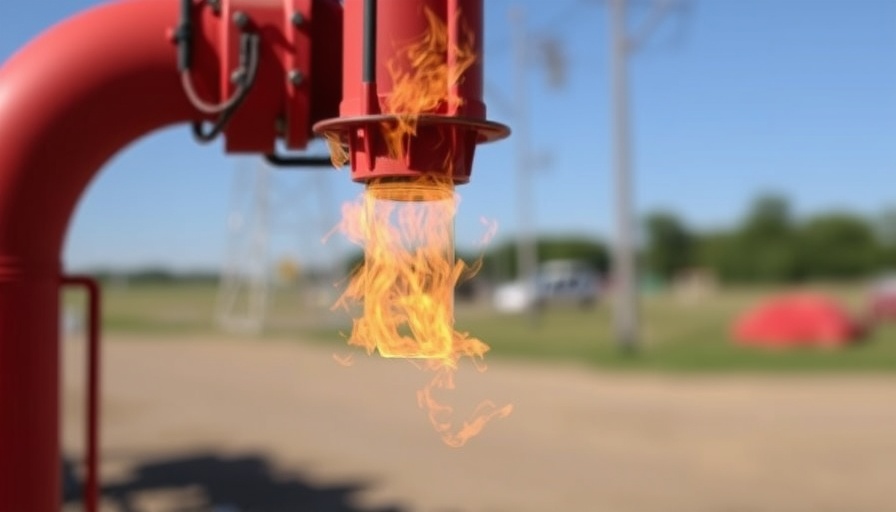
Understanding OSHA's Proposed Heat Rule: A Necessity for Worker Safety
As the summer months approach, the Occupational Safety and Health Administration (OSHA) is taking significant steps to combat heat-related illnesses among workers—especially in outdoor and high-temperature work environments. This pivotal virtual public hearing, scheduled for June 16, is a critical discussion for business owners and facility managers, whose diligent adherence to the forthcoming regulations could not only prevent health crises but also foster a safer and more productive workplace.
Key Provisions of the Proposed Heat Rule
At the heart of OSHA’s proposal is a mandate requiring employers to create a comprehensive heat-related illness prevention plan tailored to individual worksites. This plan, which must be documented for organizations with over ten employees, stands as a proactive measure to ensure worker safety. The proposed regulations activate when the heat index reaches 80°F or when the wet bulb globe temperature (WBGT) aligns with the National Institute for Occupational Safety and Health (NIOSH) recommended limits, taking into account the multifaceted nature of heat stress, such as humidity and sunlight exposure.
Why This Hearing Matters
The upcoming hearing on this rule is more than just a procedural formality; it represents an opportunity for stakeholders to voice their opinions about the proposed changes. Business owners, facility managers, and others in the commercial construction sector must engage in this dialogue to consider how policies will affect operational needs and employee performance. As it stands, it’s a chance for these stakeholders to advocate for practical considerations—like the financial implications of implementing new safety measures—while also showing their commitment to worker wellness.
Implications of Non-Compliance
Failure to comply with the proposed regulations could result in severe repercussions, including potential penalties from OSHA and increased worker vulnerability to heat illnesses, such as heat exhaustion and heat stroke. The proposed measures, such as ensuring employees receive at least one quart of water per hour and mandatory breaks in shaded or air-conditioned areas, are not just compliance checkboxes; they're essential for reducing workplace accidents and enhancing overall employee morale.
The Cost of Heat-Related Illnesses
The financial impact of neglecting worker safety can be staggering. The CDC estimates that heat-related illnesses lead to significant healthcare costs for both employers and employees, not to mention productivity losses. By investing in safety measures now, businesses can save on costs related to compensation claims, medical expenses, and even lost workdays. This preventative approach not only demonstrates social responsibility but reinforces a company culture that values health and safety as integral to operational success.
How Employers Can Prepare
To prepare for the upcoming regulatory changes, it’s crucial for employers to start considering how they will meet the new requirements. Here are actionable insights:
- Conduct Risk Assessments: Evaluate current work environments for potential heat stress hazards and implement appropriate controls.
- Training Programs: Develop training sessions to educate staff about recognizing heat-related illnesses and proper hydration practices.
- Monitoring Systems: Establish monitoring methods to track heat levels and worker conditions regularly.
By being proactive now, employers can sidestep pitfalls associated with sudden shifts in policy and ensure a seamless transition to the new regulations.
Community Engagement is Vital
As community developers and socially conscious businesses, engaging in initiatives that advocate for employee safety not only showcases your commitment but can significantly influence local policy. Aligning business practices with community health initiatives fosters a responsible brand image and attracts employees who value a workplace that prioritizes their well-being.
In conclusion, as the hearing on OSHA’s proposed heat rule approaches, it’s vital for industry stakeholders to remain informed and actively participate in discussions shaping workplace safety standards. Together, we can build a safer, more supportive environment for all workers, promoting health and enhancing productivity in the workplace.
For more information on how to prepare for the upcoming OSHA guidelines and ensure workplace safety, consider engaging with resources provided by OSHA and local safety organizations.
 Add Row
Add Row  Add
Add 




 Add Row
Add Row  Add
Add 

Write A Comment